

This is just notes on the processing of the various images. For easier comparison, all images are presented in north-up and east-left orientation.
These are the five composite images that make up the feb 6 image before dividing the master flat from the frames. The last image is the master flat frame. NGC2903 images presented scaled Min/max -- 966.4/3353.7
 |
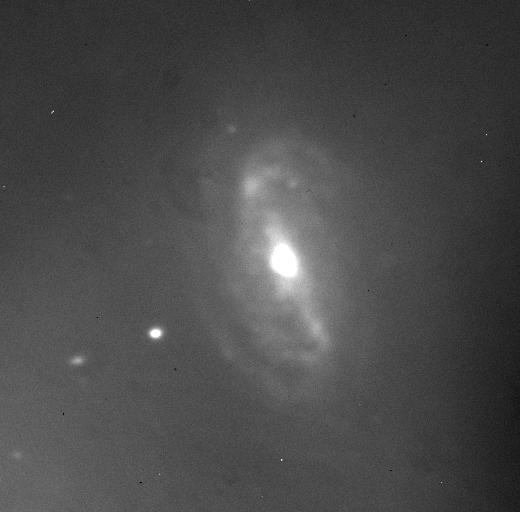 |
 |
| ngc2903c1-50-300-001 | ngc2903c1-50-300-002 | ngc2903c1-50-300-003 |
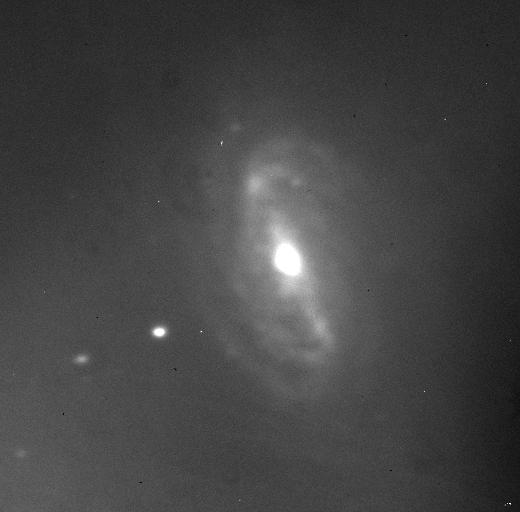 |
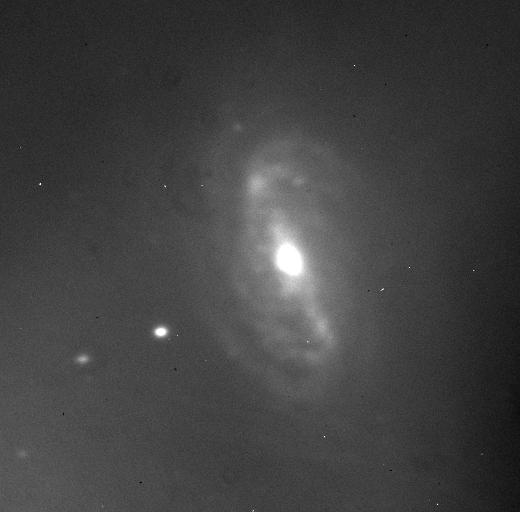 |
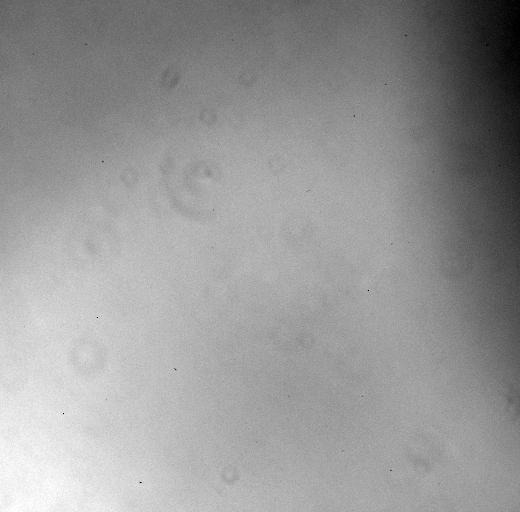 |
| ngc2903c1-50-300-004 | ngc2903c1-50-300-005 | Master Flat ~ min/max -- 0.68/1.22 |
Notice that the dark area in the master flat frame is in the top right corner and in the images of the galaxy it's in the bottom right. Using this flat field introduces noise because of this difference. The result is this:
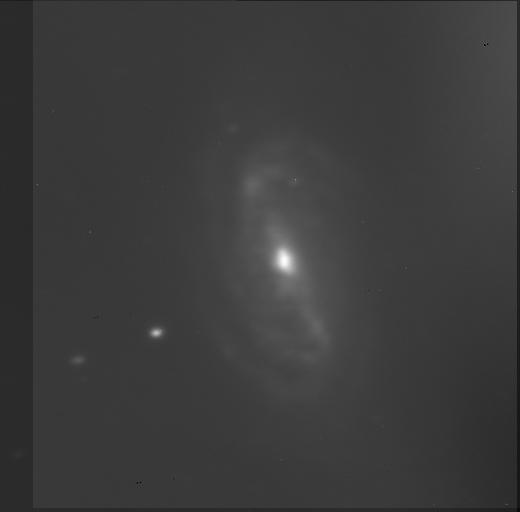 |
Dividing out the master flat introduced a bright spot in the top right corner (where the dark spot is on the master flat) and left the dark spot from the guide camera at the bottom. Appart from this, FWHM of the brighter star being 6.7 pixels in the vertical and 9.0 pixels in the horiziontal (~5.5"x7.4"). The size of the FWHM (Full Width at Half Maximum of the star's brightness profile) can help determine the resolution of an image. An ideal FWHM for this telescope would be about 4 or 5. Also, the difference in the two directions indicates a tracking error. The dark band on the corner left edge is from the averaging process, since the galaxy drifted over the time the images were taken. Registering shifted the images, so there were some areas where the images didn't overlap, and those areas have a lower average than the rest. |
The top three images are "good" images (Images that went into the final average) and the bottom three are images that were cut for various regions. Images are scaled to Min/Max -- 370.35/927.59.
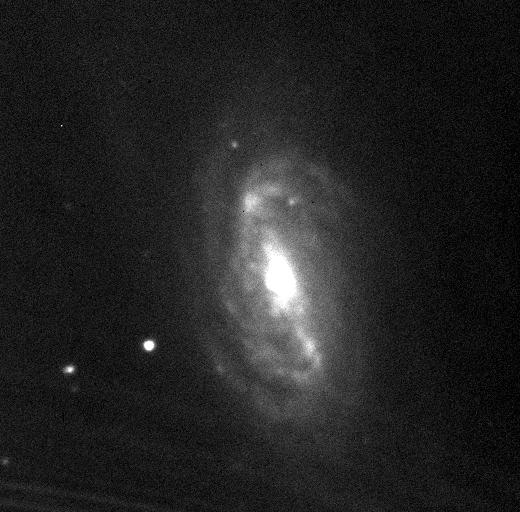 |
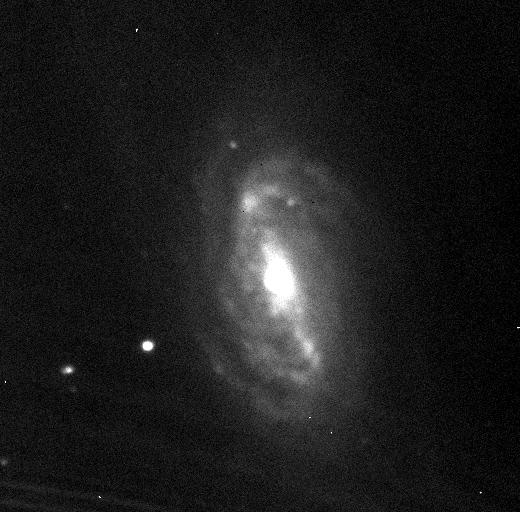 |
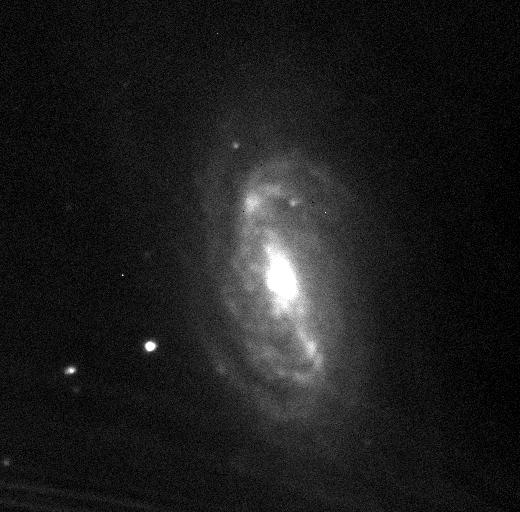 |
| ngc2903-50-60-020 | ngc2903-50-60-026 | ngc2903-50-60-030 |
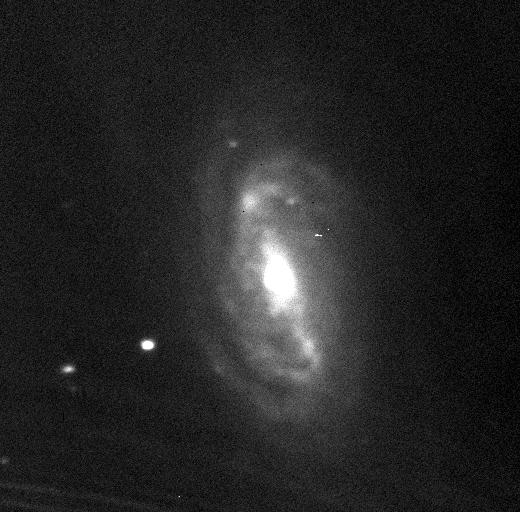 |
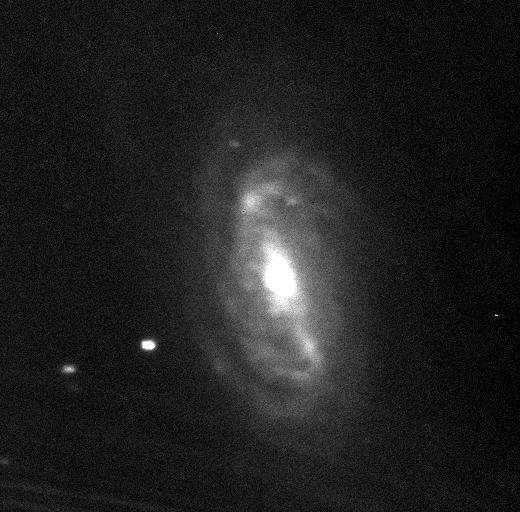 |
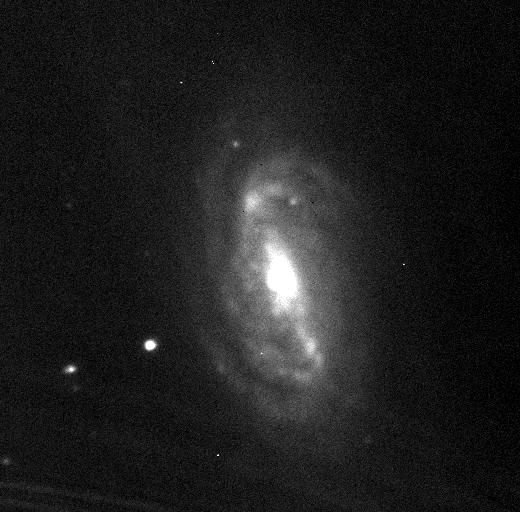 |
| ngc2903-50-60-018 ~ eliminated due to deformed star and extremely hot pixels on galaxy | ngc2903-50-60-023 ~ eliminated due to extremely deformed star | ngc2903-50-60-025 Eliminated due to random very hot pixels on galaxy area |
Only including images with good stars into the final average helps give a better quality image. Take #23 for instance: the star is distinctly elongated, which indicates a tracking error (telescope moved during exposure). If frames like these were included into the final average the result would likely be more blurry than if we left them out.
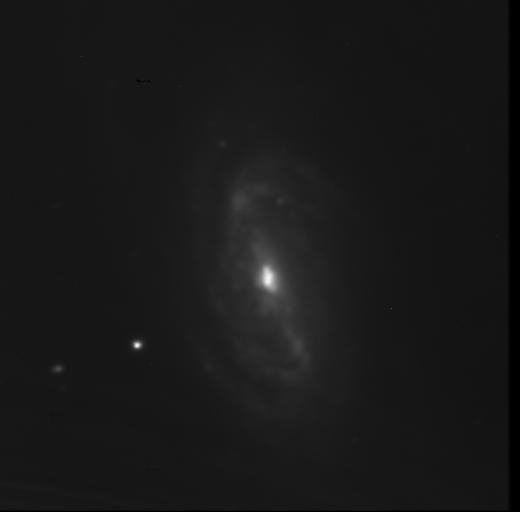 |
This is much better than the last image, and not just because the flats were correct. The FWHM of the brighter star in the image is about 5.6 pixels, approx 4.6" in both directions and the telescope didn't drift as much between frames. |
The top three images are the original images (after flat division), the bottom three are the same images with a median filter applied.
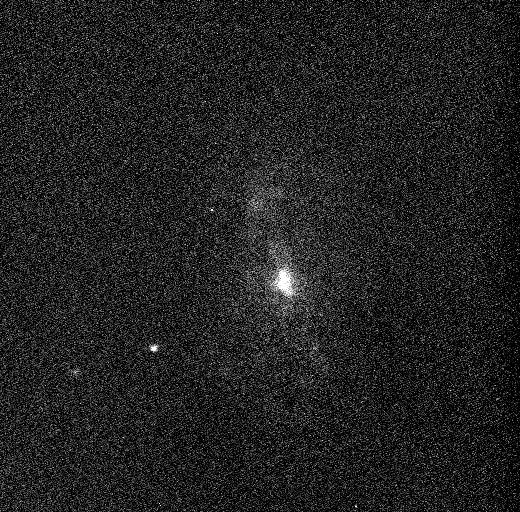 |
 |
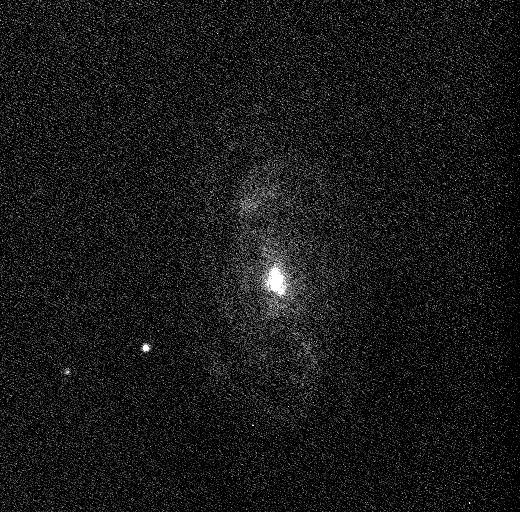 |
 |
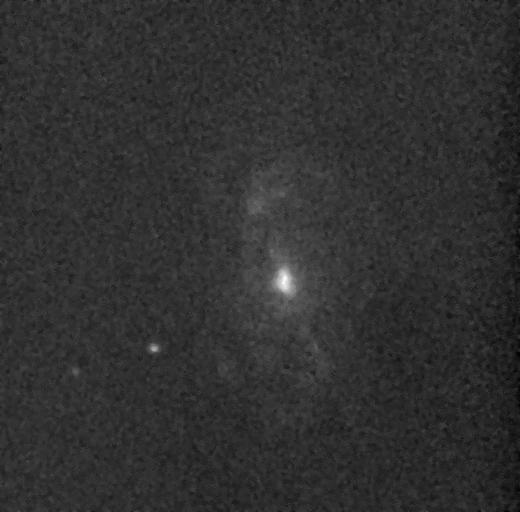 |
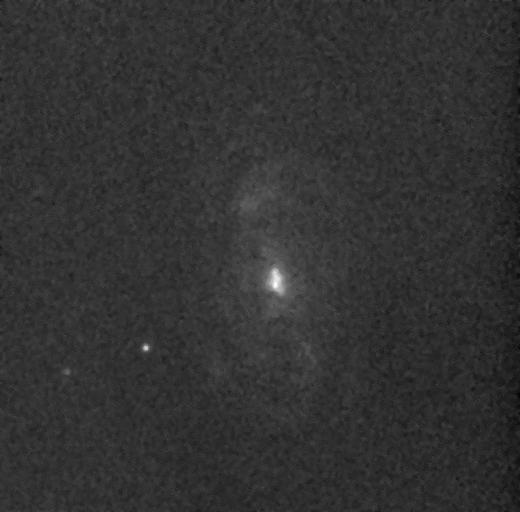 |
| ngc2903b1-50-60-001 | ngc2903b1-50-60-004 | ngc2903b1-50-60-012 |
The Results:
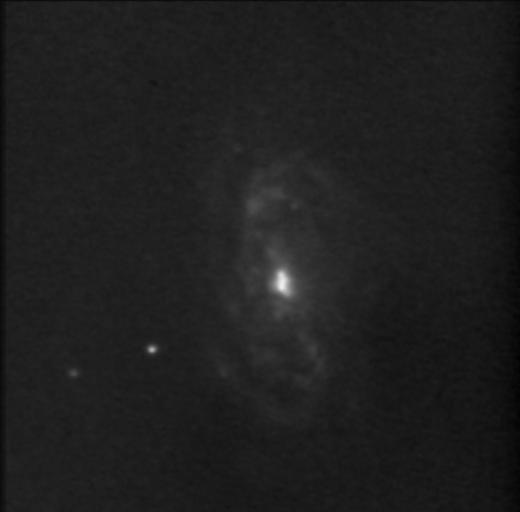 |
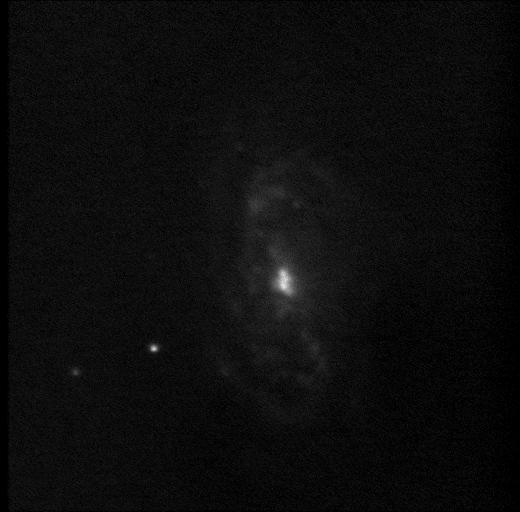 |
| Average of Median filtered Images | Median of manually registered Non-filter processed images |
| The image to the left is actually better quality, despite the noise, since more detail can be seen and the FWHM of the stars is better by a fair bit. | |
_________________________________________
Banner image is a slice of HST image by NASA/ESA